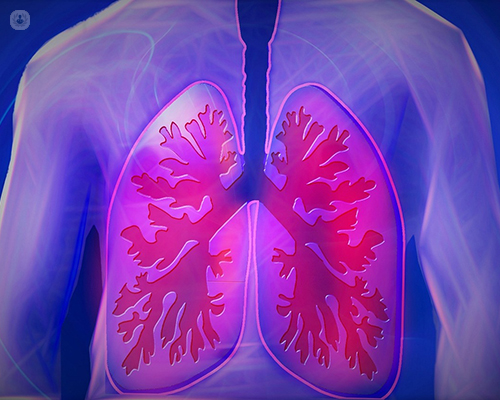How COPD affects the body
Autore:Chronic obstructive pulmonary disease (COPD) is a term that is used for conditions that hinder the functionality of the lungs and cause breathing difficulties as a result. Revered Hitchin-based consultant pulmonologist, Professor Indranil Chakravorty shares his expertise on the disease, discussing what causes it, and how it affects the lungs and the entire body.

What is chronic obstructive pulmonary disease?
Chronic obstructive pulmonary disease, COPD, is an inflammatory disease that restricts airflow from the lungs due to airway obstructions. It can be triggered by exposure to damaging substances that are inhaled, but people with certain genetic makeup are predisposed to being vulnerable or susceptible to developing the condition.
What causes COPD?
There are several causes of COPD. It's a combination of environmental factors, for instance, air pollution, exposure to cigarette smoke, pollution from vehicles or industry, and genetic factors. The causes are noxious stimuli and their interaction with the body, resulting in inflammation.
How does it affect the respiratory system?
Once COPD develops, it manifests in three different ways. The first is the production of excess mucus, as a protective mechanism, in the airways. Secondly, the airways constrict and cause obstruction. Finally, and as a result of restricted airflow, there is structural damage to the lungs, specifically to the alveoli, the tiny sacs in the lungs, and the bronchioles, the branches that the sacs are on. The alveoli and bronchioles lose elasticity and are replaced with fibrous tissue that can develop into cysts.
COPD is a combination of chronic bronchitis, narrowing obstruction of airways, and emphysema, the structural damage of the alveoli. Combined they will lead to the eventual stiffening of the lungs, making it much harder to move the lungs, leading to breathing difficulties.
How is the rest of the body affected?
The main symptoms of COPD are coughing and sputum production, and breathlessness. Although it presents as a respiratory illness, it affects the whole body. Long-term, the blood vessels that carry blood to and from the body will become inflamed, causing an increase in pulmonary vascular resistance. Similarly, these blood vessels become stiff and narrow, increasing blood pressure in the lungs and leading to further breathing difficulties.
COPD will eventually lead to hypertension, an increase in pressure in the pulmonary vascular system with the right side of the heart particularly burdened. This strain may result in cor pulmonale which is right-sided heart failure.
COPD will also cause pulmonary hypertension, leaving patients with low oxygen levels. If the muscles of the body are starved of oxygen they will start to decline. This makes it difficult for people not only to exercise but to do simple, normal things.
Finally, the catabolic stage is reached. Even if the patient is consuming highly calorific food, the body is constantly fighting inflammation. It goes into a catabolic state and the patient will lose weight unintentionally. The loss of weight, in addition to muscle mass, makes it increasingly more difficult for patients to perform day-to-day activities.
If you would like to book a consultation with Dr Chakravorty, you can do so directly by visiting his Top Doctor’s profile.


